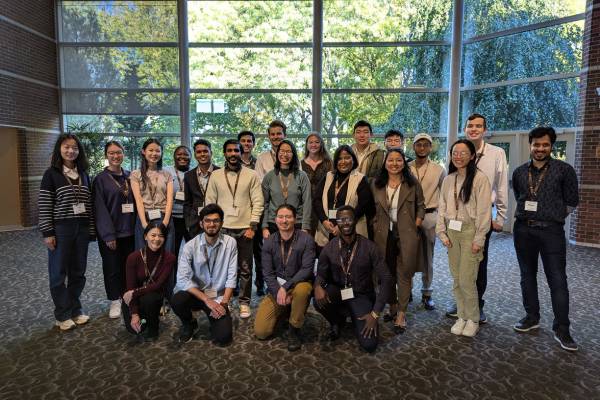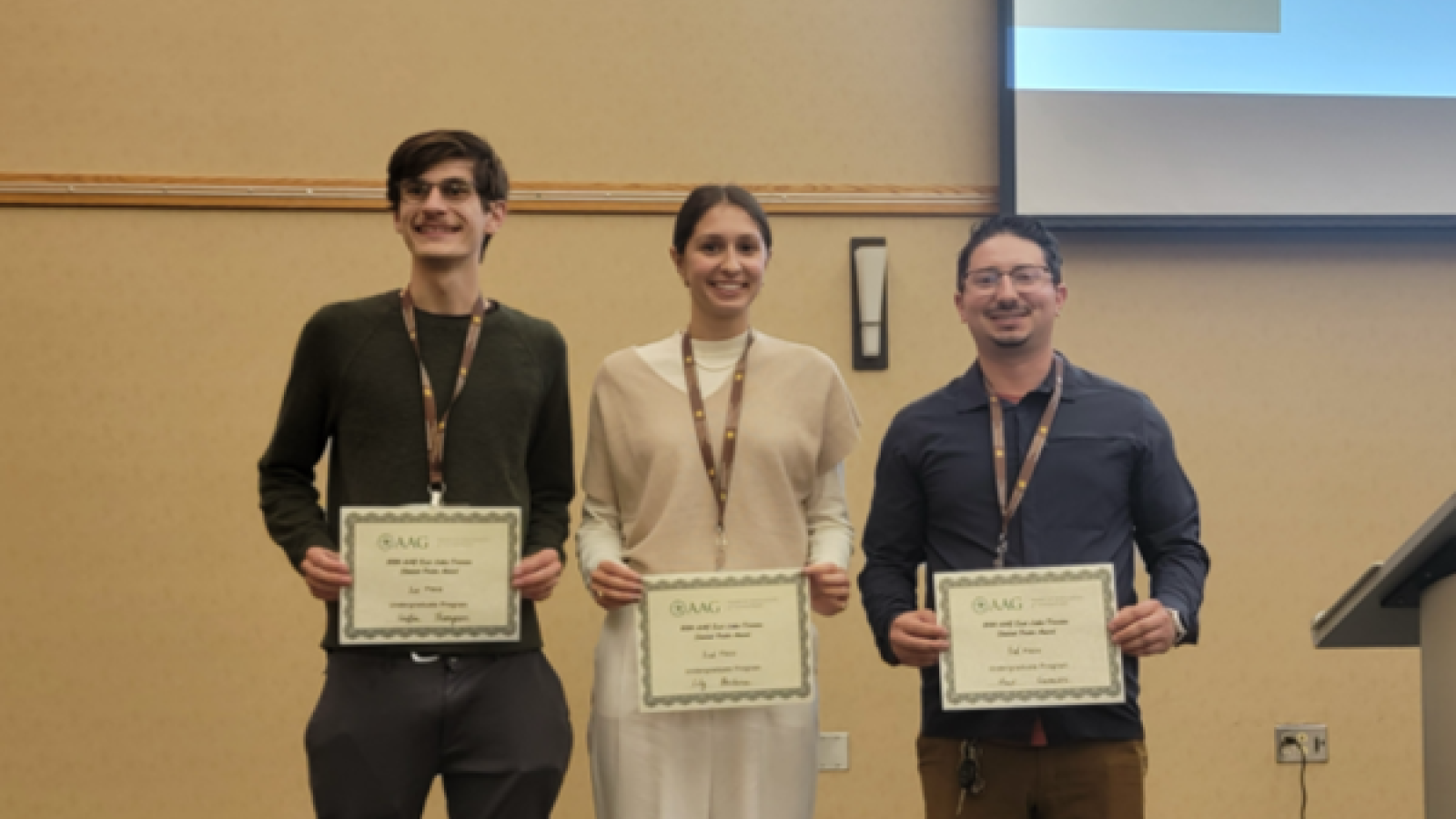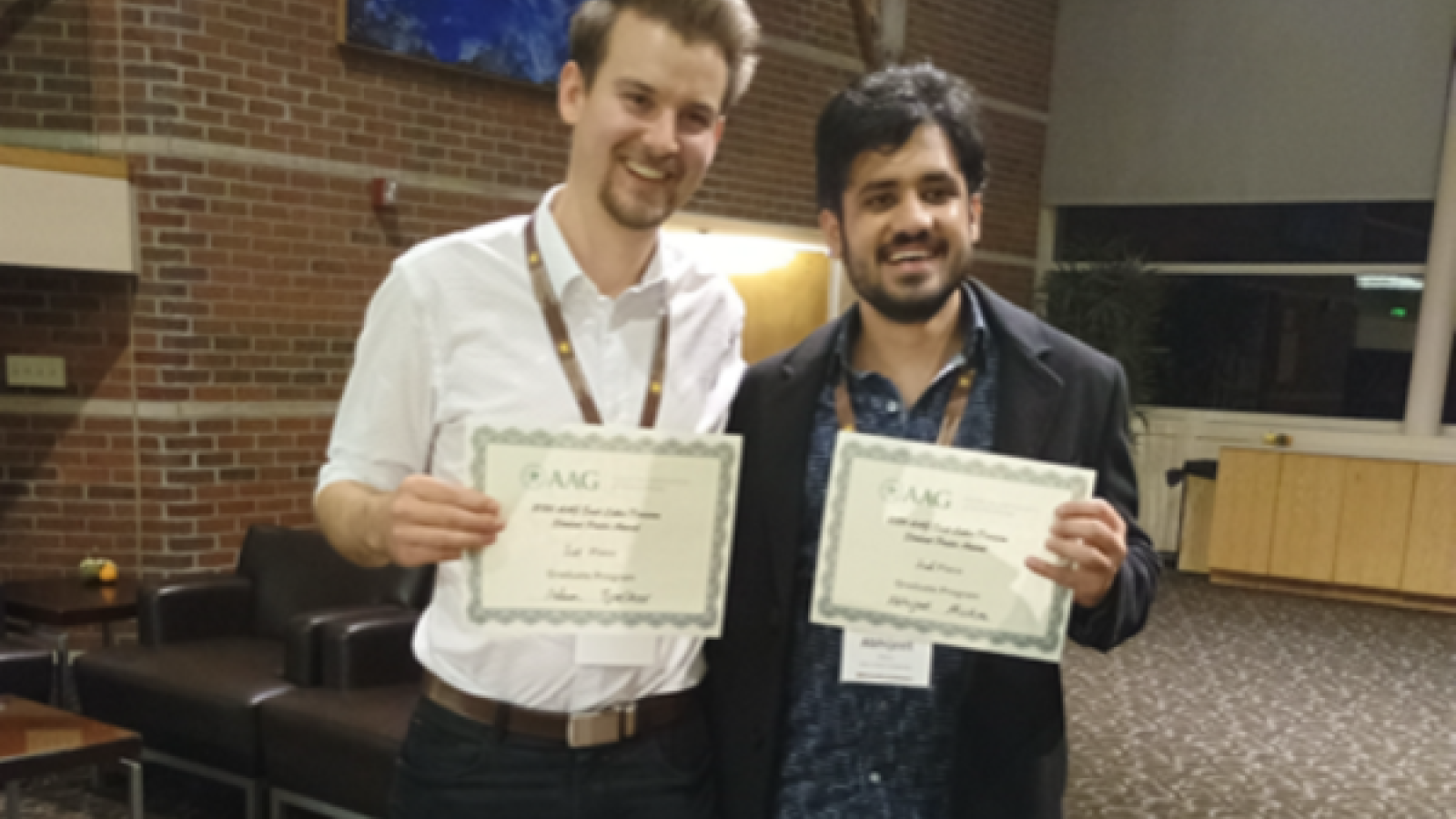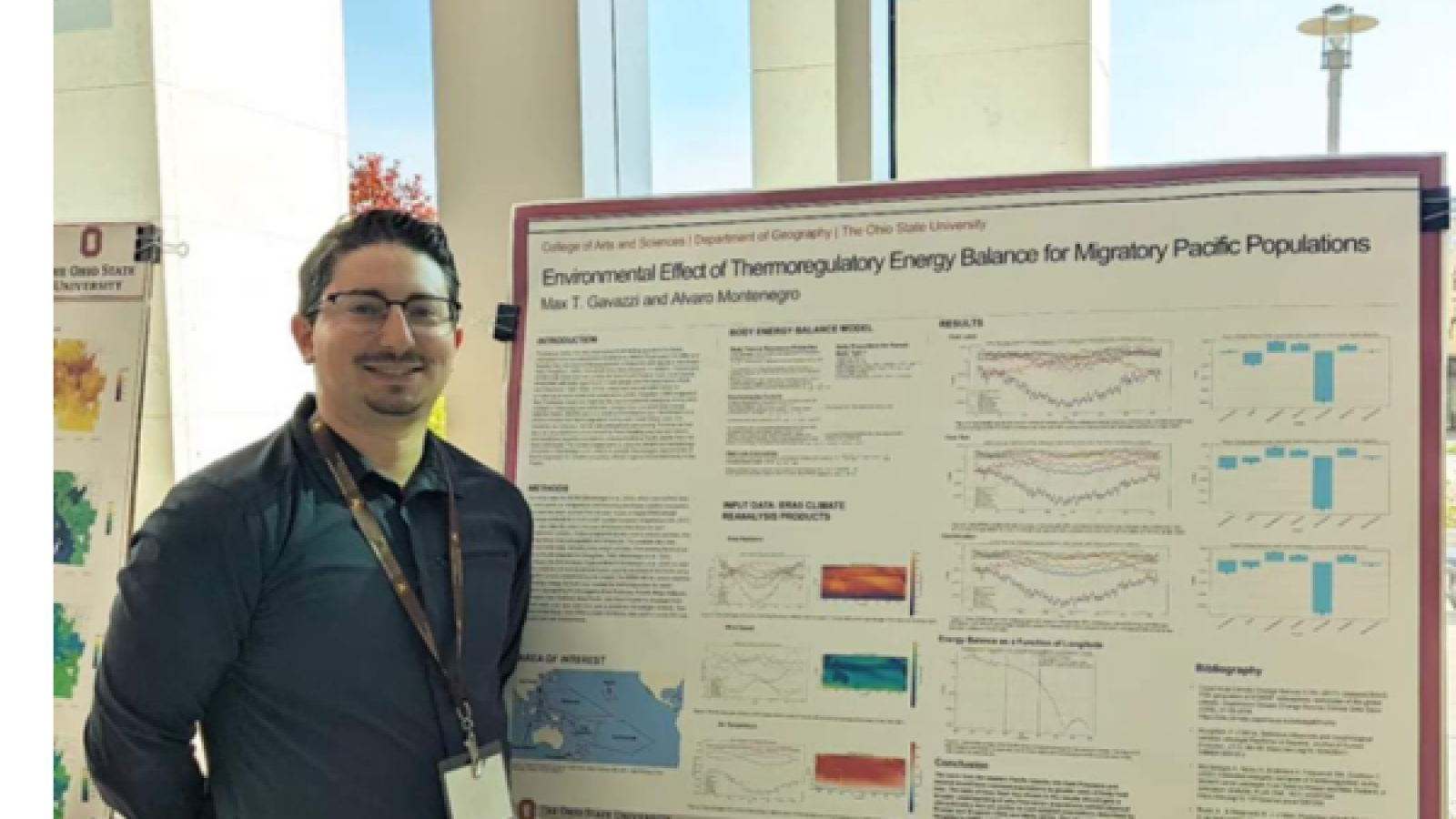Meet our award-winning students!

Ohio State Geography was well-represented at the joint East Lakes-West Lakes AAG Meeting at Western Michigan University in Kalamazoo, MI. We had the 3rd highest number of registrations at the meeting (n=20), behind Western Michigan University (the host), and Northern Michigan University.
Our students did an amazing job winning the student competitions. Max Gavazzi, our undergraduate student and prospective graduate applicant, won 3rd place for undergraduate posters. Our graduate students dominated the graduate student poster competition. Adam Tjoelker won 1st place, Abhijeet Mishra won 2nd place, and there was a 3-way tie for 3rd place between Emily Tingler, Mostahidul Alam, and Summer Ha. Our students did us proud!
Professors Sandy Wong and Alvaro Montenegro accompanied our students.
In addition to presenting their research, graduate students distributed Buckeye swag and gave a good impression of our department to other students. Sandy and Alvaro organized a GeoBowl competition. And Sandy organized the student competition.
Congratulations to our department! See below for more information on our winning students’ posters!
Max Gavazzi (working with Alvaro Montenegro)
Poster title: Environmental Effect of Thermoregulatory Energy Balance for Migratory Pacific Populations
Abstract: This study investigates the impact of climatic variability on the energy required for thermoregulation among human populations residing across seven Pacific regions: East Polynesia, Hawaii, Mega-Wallacea, Micronesia, New Zealand, West Pacific, and West Polynesia. Using ERA5 climate reanalysis data for environmental factors like wind speed, air temperature, and shortwave radiation, as well as anthropometric data and the BEBM from Montenegro et al. (2023), this study models the thermoregulatory energy needs of Pacific populations. The results of this study show that the move from the western Pacific islands into East Polynesia and beyond would have exposed populations to greater rates of body heat loss.
Adam Tjoelker
Poster title: Assessing Surface Flow and Volume Change of the Lehman Rock Glacier via Repeat High-Resolution Drone Surveys
Abstract: This poster demonstrates the GIS methods used to confirm that the Lehman Rock Glacier is still actively flowing, by comparing two aerial drone surveys. These methods developed by Adam will be used in his PhD project to analyze change between additional survey years to determine whether the Lehman Rock Glacier is accelerating or decelerating in response to atmospheric warming. These insights will improve estimates of the lifespan of this rock glacier and others which are threatened by climate change.
Abhijeet Mishra
Poster title: Spreading Pathways of the AMOC in E3SM Simulations
Abstract: Historically, North Atlantic Deep Water (lower limb of AMOC) was suggested to be transported along the western boundary as Deep Western Boundary Current (DWBC). With recent observations and model simulations, it has been found that the deeper waters spread towards the interior of the North Atlantic basin. This study explores this spreading pathway away from the DWBC and into the interior, in new simulation runs from Energy Exascale Earth System Model (E3SM).
Summer Ha
Poster title: Environmental Impacts of the Russian Invasion of Ukraine on the Black Sea Biosphere Reserve and Mariupol: A Change Detection Analysis
Abstract: Armed conflicts inevitably cause severe direct and indirect environmental impacts, often with effects that ripple through decades. While armed conflicts can lead to significant environmental degradation, they may also limit resource exploitation, thereby providing ecosystems with rare opportunities for recovery. This poster presents a change detection analysis and a statistical threshold method using remote sensing to assess both environmental degradation and reforestation in the Black Sea Biosphere Reserve and Mariupol (both natural and urban regions in Ukraine), offering insights into how these environmental impacts vary across different geographical contexts.
Emily Tingler
Poster title: Women, Water, and Well-being: Gendered Experiences of Household Water Contamination in Parkersburg, WV
Abstract: DuPont Washington Works chemical plant knowingly pumped hundreds of thousands of pounds of toxic C8 waste into local waterways, water tables, and landfills for over 40 years, contaminating the drinking water for more than 100,000 residents in and around Parkersburg, West Virginia. This project investigates gendered experiences of and relations to C8 water contamination for women living in and around Parkersburg, WV, specifically their understandings of risk and how these risks impact women’s bodies and overall well-being. This research reveals that women experience specific gendered consequences as a result of C8 exposure that includes unequal power relations, altered perceptions of water and risk, and severe reproductive and autoimmune health impacts.
Mostahidul Alam
Poster title: A spatial statistical approach to assessing socio-economic equity in transit-based accessibility to urban services in Franklin County, OH
Abstract: Access to urban services is a key indicator of transit system effectiveness and socio-economic equity. Previous studies mostly used Linear Regression or Spatial Autoregressive (SAR) models to measure transit-based access but overlooked local spatial variations by applying global coefficients across all areas. In this study, I applied Geographically Weighted Regression (GWR) to capture these local variations, offering a more nuanced view of transit access among different socio-economic groups in Franklin County, OH. This approach provides valuable insights into spatially distinct influences on accessibility, advancing understanding of equity in urban transit systems.



